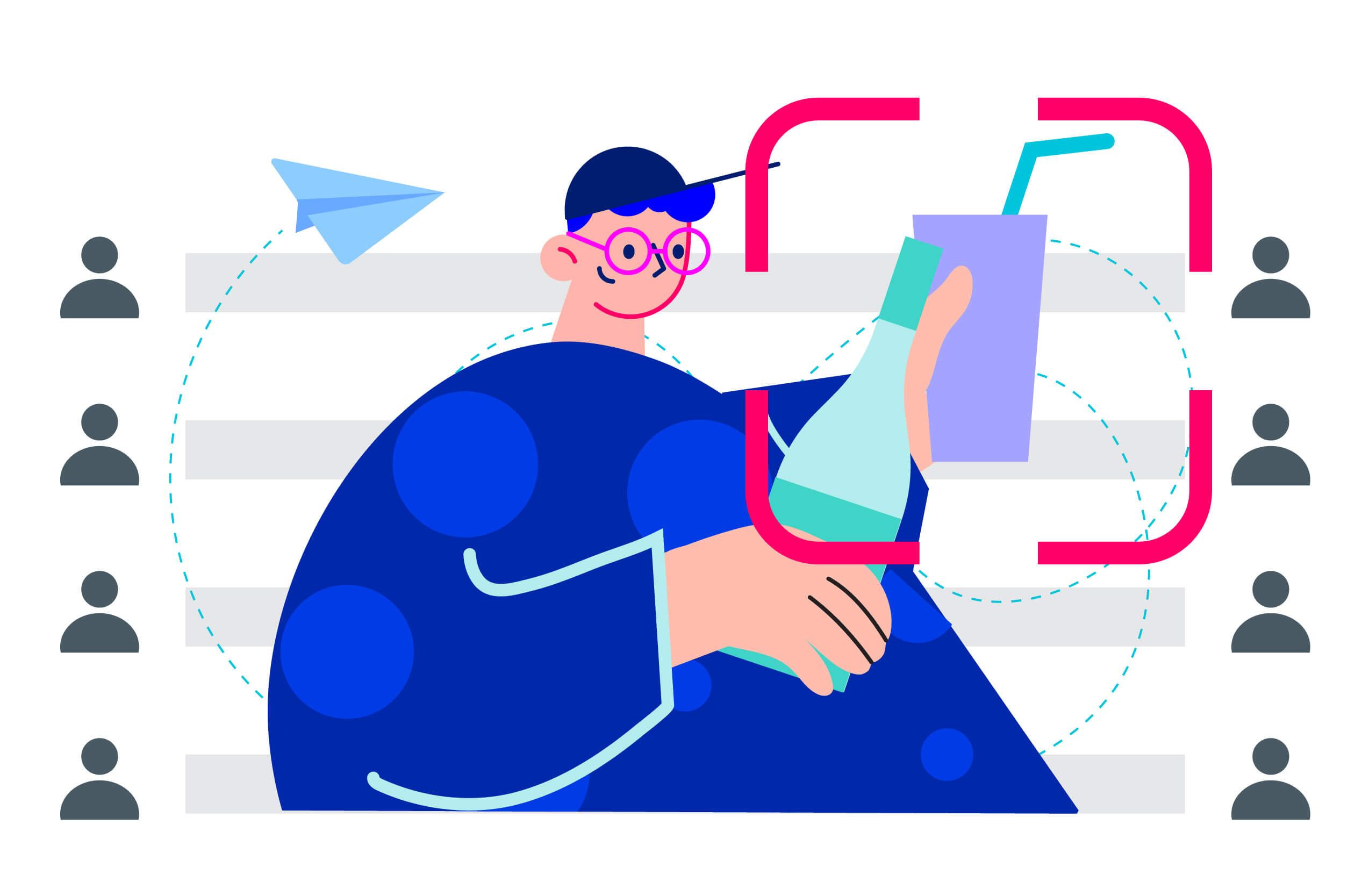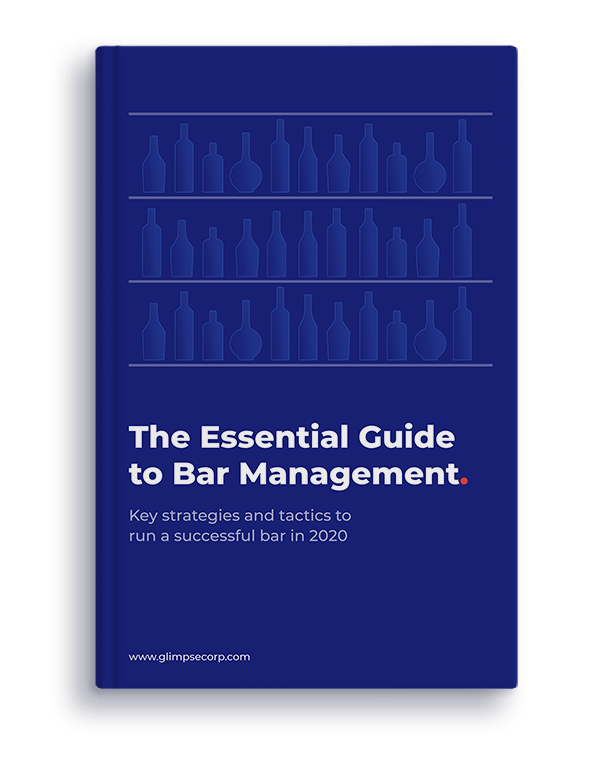Operating a bar is not without challenges. For everything to run smoothly there are standard bar operations that every bar manager should have in place in order to run a streamlined business. This includes bar opening and closing procedures, menu and inventory management, and promoting your bar.
Use this guide to efficiently manage the daily operations of running your bar.
A. Opening Procedures
To create a professional atmosphere and keep you and your employees accountable it’s important to have a standard opening procedure and checklist for your bar. These procedures outline the tasks that need to be completed each day before you open the doors.
Here are the top procedures for you and your opening staff:
Property check
Before entering the establishment, do a property check to ensure everything is okay on the outside and if there’s any damage from the night before. Clear any trash away from doors, windows, and the parking area.
Internal check
Check inside for anything that’s out of place, such as broken chairs, missing items, or any duties not performed by your closing staff.
Cleaning
Clean throughout the bar, getting it ready for another evening of business. This includes dusting and cleaning chairs and tables, vacuuming and washing floors, wiping bar counters, and checking to see if the kitchen is clean and ready for a new shift.
Inspect the taps
Bar taps need to be kept in great working order – inspect taps for broken spouts, faulty lines, and bad kegs.
Bar prep
Bar staff should run through a list of bar prep duties, including setting out clean bar towels, cutting garnishes, and squeezing juice.
Check wine bottle dates
Your bar staff should be dating open wine bottles – check to see if any are past their usability date and need to be removed
B. Closing Procedures
Bar closing procedures are just as important as opening tasks. At the end of the day, a closing checklist ensures that your bar is clean and ready for the next day.
Personalize the list for your own business, using these procedures as a guideline for your checklist:
Empty and lock
At closing time, make sure all your customers have left the premises and that the doors are locked before your staff begins cleaning and you start cashing out for the day. Turn off lights not in use to save on energy costs.
Bar closing
Your bartenders should follow a checklist of tasks to be completed at the end of the day not only to prep for the next day but also to maintain a high standard of cleanliness. This includes:
- Dating and storing perishable garnishes, cocktail ingredients, and other foods so they remain fresh.
- Dating open bottles that have been newly opened.
- Cleaning counters, bar equipment and tools, and rinsing drains.
- Wiping downspouts and taps.
- Loading and running the dishwasher with the last glasses of the night.
- Setting clean glass out to air dry.
- Cleaning bar mats.
Refill disposable items
Having your night staff refill for the next day saves time for your opening staff. Refill all disposables such as napkins, straws, and stir sticks.
C. End of Day Cashing Out
For you as a bar owner and manager, the most important part of your bar operations is closing and cashing out money at the end of the day. If you’re not the one cashing out, make sure you have a reliable manager you can count on.
End of day cashing out means making sure that all sales have been accounted for and checking to see if there’s a discrepancy between your POS system and the registers or inventory.
Even with the efficiency of a POS system, the process of reconciling receipts, counting money, and balancing the cash drawer is your checkpoint to ensure the accountability of each day’s transactions.
To avoid errors, it’s important to follow these procedures at the end of day when cashing out bartenders and servers:
Balance registers
Balancing starts with counting all your cash, including cash and credit sales. Make sure the amount of cash on hand matches all your tabs for the night.
Distribute tips
Your employees count on tips to supplement their income. Whatever method you’ve decided to use for tips, whether it’s by percentage, split by hours worked, or by pools and points, making tip splitting part of your cashing out procedure makes your staff feel valued and keeps them loyal.
Secure money and receipts
Keeping your money and receipts secure in a safe is your best option when running a business that operates into the late evening hours. Leave your banking to daylight hours for security
D. Menu Management
One of the operations overlooked by many bar managers is menu management. In order to increase the sales of the drinks and foods you’re serving your customers you need to create the best menu possible for your bar. This includes creating the right beverage and food menu, pricing items for profit, and promoting these items.
Start by paying attention to the latest bar trends – what is it that customers are looking for when they’re out for the night? Always consider who your customers are and what they’re likely to order whether they’re working professionals, students, or a mixed clientele.
When you have your menu set, learn how to standardize your drink and food recipes and set prices with the best profit margins.
Lastly, focus on promoting what you’re serving by creating a menu that stands out and entices your customers:
- Creatively name your drinks.
- Include local beers and wines on your drink list.
- Write interesting descriptions, listing ingredients and highlighting local ingredients.
- Include images of your highest margin drinks and food items – pictures sell!
E. Managing Inventory and Suppliers
Managing bar inventory and working with the best suppliers is another important aspect of your bar operations.
Use these tips to better manage your inventory and supply costs:
- Have your bartenders do a starting and ending inventory before and after each shift.
- Do a full weekly inventory.
- Find the best suppliers for both well and call brands of liquor – this can make a huge impact on your profit margin.
- Review frequently for slow-moving drinks and brands – offer discounts and specials to move this inventory so you can replace it with drinks and brands that are more popular and profitable.
- Have strategies in place for over-pouring, training your bartenders with the correct procedure.
- Work with suppliers who are willing to be flexible with their distribution costs and open to better deals promoting new products.
F. Keep Licenses and Permits Up To Date
Staying up to date with your liquor licenses, permits, and health inspections is what’s going to keep your business open and running without fines or interruptions. It can be easy to overlook all these regulations when you get caught up in the daily operations of running a bar.
Set reminders for upcoming renewal dates and other important dates so you don’t miss a deadline. The best way to deal with surprise health inspections is by staying on top of all bar operations so you’re prepared at all times!
G. Build a Winning Team
As a bar manager and owner, you need a strong and winning team of employees behind and in front of the bar to be a success. When hiring, think about how well someone will fit in with the rest of your staff. Don’t just look at experience and qualifications when interviewing – skills can be learned. You want to hire employees who have a great attitude and want to be part of a successful team.
As a leader, it’s important that you jump in and join your employees both behind the bar and serving customers. Pitching in and interacting with both your staff and your customers is a great way to build a strong rapport with employees and build customer relationships that keep people coming back.
H. Maintaining Bar Training Manuals
Create an operations and procedure manual that everyone can refer to – and keep it up to date as procedures change.
Include the following in your bar operations manual:
- Contact list for you, your managers, and all employees.
- Opening and closing checklists.
- Cleaning and refilling checklists.
- Resources for employee training.
- Emergency procedures.
I. Bar Marketing and Promotion
In order to keep your current customers happy and coming back and to pull in new clientele, you need to be constantly marketing and promoting your bar. With so much competition in the hospitality industry, you have to develop promotion strategies that reach your target customers and convince them that you’re the best bar for them.
Good promotion ideas include:
- Building a strong presence in social media, such as Facebook, Instagram, and Twitter.
- Post new content often.
- Advertise where you’ll be seen by different target audiences.
- Create a loyalty program.
- Have a website that includes contact information and directions on how to find you.
J. Preventing Theft
In a competitive market, it’s challenging enough when it comes to profits and loss. According to a study by the United States Chamber of Commerce, employee theft in bars and restaurants amounts to almost $400 billion in lost profits.
To prevent employee theft you need to have systems in place to monitor your staff and make them accountable:
- Install security cameras to monitor employees behind the bar. With Glimpse, you can match the video footage with your POS system to instantly spot gaps between recorded sales and drinks passed over the counter. Learn more about Glimpse’s video auditing technology.
- Hire employees based more on attitude and trust rather on their skills and experience.
- Have a pour policy in place for quality control and to ensure that your bartenders maintain accurate drink measurements according to recipe standards.
- Use your POS system to spot check employee tabs.
- Be clear about the consequences if losses and theft occur.
Final Words
Opening procedures before your bar opens for the day, closing procedures at the close to get ready for another shift, and managing your inventory are all part of your daily bar operations. Having procedures in place helps you manage and run your bar smoothly and efficiently.
Think of your bar operations manual as the rules and guidelines to a successful business. It’s these procedures that give both you and your employees the information needed to provide great customer service, improve productivity, and increase your profitability and bottom line.
You might also like:










 +1 (786) 292-2373
+1 (786) 292-2373 insights@glimpsecorp.com
insights@glimpsecorp.com





